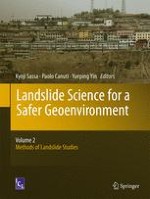2014 | OriginalPaper | Chapter
 Estimation of Landslide Impact Disaster by Discrete Element Method: Jiangping Hydropower Station, Hubei, China
Estimation of Landslide Impact Disaster by Discrete Element Method: Jiangping Hydropower Station, Hubei, China
Authors : S. N. Wang, Chong Shi, Weiya Xu, Yulong Zhang, Hailong Zhang
Published in: Landslide Science for a Safer Geoenvironment
Publisher: Springer International Publishing
Activate our intelligent search to find suitable subject content or patents.
Select sections of text to find matching patents with Artificial Intelligence. powered by
Select sections of text to find additional relevant content using AI-assisted search. powered by
